Updated: 07-Oct-2020
The "Fabbrica Automobili Isotta-Fraschini" in Milan was dedicated to the manufacture of high-standard automobiles since 1898.
-The company was founded by Cesare Isotta and the brothers Vincenzo, Oreste and Antonio Fraschini.
-We now have a picture with the first six aviation engines made by Isotta Fraschini.
-It is worth it to reproduce it full-size
"IF" has become the company's logotype.
-From the M-1 we had no news before writing the text of the previous edition.
-We see that it is a V-engine but we still ignore its number of cylinders and its power.
-IF started their manufacture of aviation engines in 1911, building the V-1 engine for engineer Forlanini. This engine was used on his second dirigible, "Città di Milano".
-The V-1 gave 90 CV at 1,200 rpm.
-It was followed by the V-2 with 100 CV and the V-3 with 110 CV.
-Already in 1925, the V-4 delivered 150 CV while the V-4b increased it to 190 CV in 1918.
-The letter "V" means "Volo."
-The V-4b is accredited to designer Giustino Cattaneo and was also manufactured by Bianchi.

"Picture of the first IF engines"
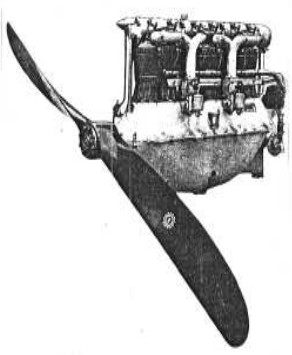
“Isotta Fraschini V-4”
-Or as its full name indicates: "Edoardo Bianchi e C. Soc. An." Fabbrica de Automobili e Velocipedi, Milano. Year 1916

“IF V-4b”
-The above engine is the V-4b viewed from the carburetor side, that is, the left one. The V-4b was designed by Cattaneo. It was built by other brands under license as well.
-The Isotta-Fraschini Type V4B that gave 180 CV at 1,350 rpm appeared around 1916, with an overhead cam shaft and two valves per cylinder.

“Isotta-Fraschini V4B”

"Isotta Fraschini V4B, longitudinal cross-section"
-The one below is the same V4b engine on the exhaust side. Without magnetos.
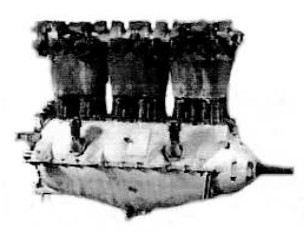
“V4b at the Turin Politechnic”
-The V-5 was an 8-cylinder inline engine that gave 200 CV. This project was also designed by Giustino Cattaneo.
-At the Turin Polytechnic, which has a section of aviation engines, there is a V4b and a V-5.
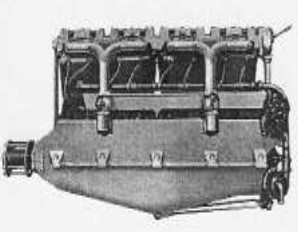
“V5”
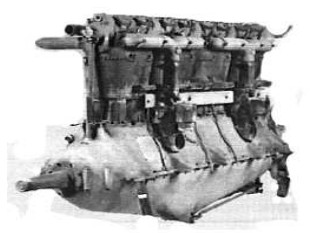
“V-5”
-The V-6 of 1917 had again 6 upright inline cylinders with an overhead cam shaft. This engine was also manufactured by Ansaldo-San Giorgio, Bianchi and Alfa-Romeo.

“V-6”

“V-6, angled front view”

“V-6, angled rear view”
-The V-7 was already a 12-cylinder V-engine at 60°.

“IF V-7 (Volo-7)”
-The V-7 cylinders were the same as the V-6. It started with 400 CV, 450 CV and quickly reached 510 CV at 1,700 rpm.
-Curiously it had four magnetos, two for each cylinder bank.
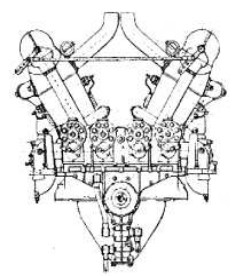
“V-7 with the four magnetos”
-The pistons had a bore of 149 mm and a stroke of 180 mm, the mentioned powers were achieved between 1,500 and 1,700 rpm. The weight per CV, including water, was 1.15 Kgs.
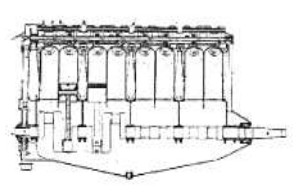
“IF V-8”
-The V-8 and V-9 were not mass-produced due to the end of WWI. The V-8 had 8 cylinders in line and although it started with 250 CV at 1,320 rpm it would reach 320 CV installed on the CR-1.
-The V-9 was known as the brand's most robust engine. It had six upright water-cooled cylinders, and gave 310 CV. The cylinders were individual as in the V-8.
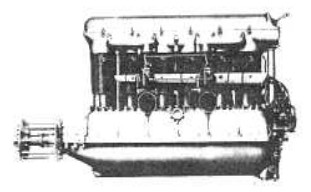
“IF V-9”
-Towards 1924, IF made a V12 engine under Lorraine-Dietrich license. These 12 Db engines were used on the SM55C.
-The ASSO engines appear at the end of the Great War, in the 1920's. The ASSO 8 gave 80/90 CV and was liquid cooled. It was followed by the ASSO 80, from which we show a beautiful photograph.
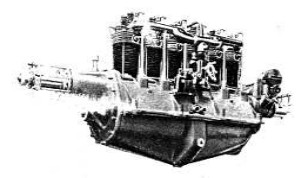
“ASSO 80”
-The ASSO 80 had reduction gear in the R1 model that gave 100 CV at 2,000 rpm, and could reach 120 CV at 2,200 rpm. The ASSO 80T was gearless and had a direct transmission from crankshaft to propeller.

“ASSO 80 R1”

“ASSO 80 T”
-Another version of the Asso 80 is the Asso 80-RT that gave 100 CV at 2,000 rpm.
-Reduction is achieved by superimposed cylindrical gears.
-It had 6 upright inline cylinders and was air cooled. The total displacement was 6,600 cc.
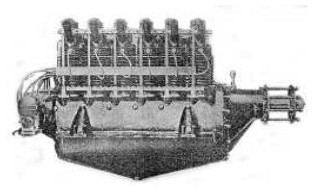
“Isotta - Fraschini Asso 80-RT”
-With its 6 upright cylinders, the ASSO 80 R1 gave way to the 80 RR model that was geared and had inverted cylinders with the same power: 100/120 CV.

“ASSO 80 RR”
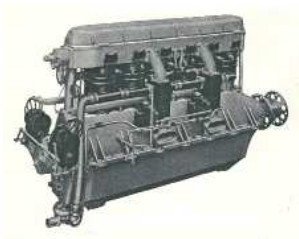
“ASSO 200”
-The ASSO 200 was an upright, inline, six-cylinder that gave 210/215 CV, and was water cooled.

“Issota Fraschini Asso 200”
-The IF model Asso 200 was also known as the "SemiAsso".
-And there was a slightly larger version like the Asso 220.
-The Asso had an Elektron crankcase.
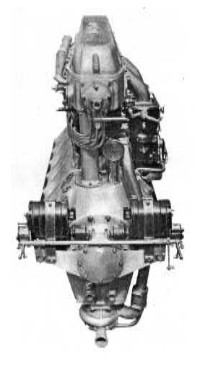
“Asso 220”
-The ASSO 500 was designed by engineer Giustino Cattaneo.
-It was a water-cooled 12-cylinder V-engine with the camshaft on the cylinder heads, and it had four carburetors.
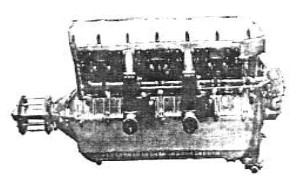
“ASSO 500, without gear”

“ASSO 500, geared”
-The ASSO 500 was designed in 1924 and in 1925 it went into production. It was sold in important quantities in the USA and Russia. The 500 RA was geared.

“ASSO 500, rear view”
-The ASSO 500 AQ model was "Alta Quota" giving 420 CV at 5,000 meters of altitude thanks to a higher compression ratio of 8 to 1 and a compressor.
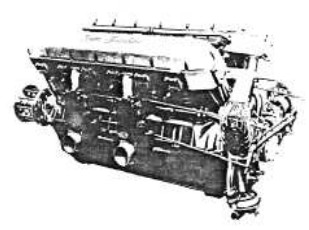
“Another ASSO 500”
-The ASSO XI-RC40, again by G. Cattaneo, was a V12 giving 860 CV at 2,250 rpm, and was from the year 1934.
-In fact, it was the last design (it was after the ASSO-Caccia) in IF.
-It is a reissue of the 500 but with gear and supercharger.
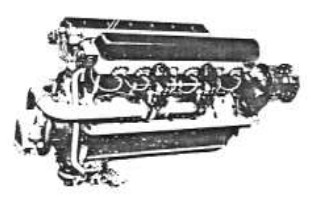
“ASSO XI”
-There were later versions such as the RC45 of 1936 giving 800 CV, or the RC15 from 1938 that gave 900 CV, better said R2C15VR.
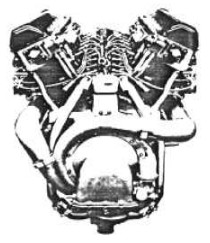
“ASSO XI, rear view”
-The "ASSO-Caccia" was also designed by Giustino Cattaneo, and was the first engine of a large family of air-cooled engines in the second half of the 1930's like the Delta, Gamma, Beta, Zeta, etc.
-This all with the idea of making simpler and lighter engines, without water, radiators, pumps, etc.
-Some solutions were from the "500" but the air cooling circuit needed deflectors and cowling to ensure a homogeneous cooling of the cylinders, especially the later ones.
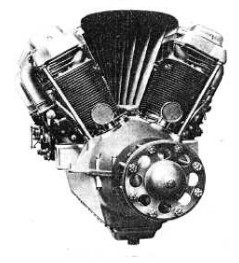
“ASSO Caccia, front view”
-We can see a nice view of the Asso-Caccia with the upper central deflector and inside it, the different inlets for each cylinder.
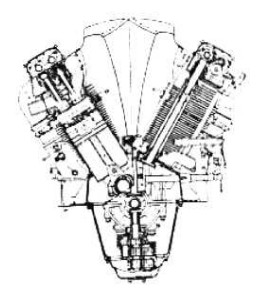
“ASSO-Caccia, cross-section”
-The ASSO-Caccia was known as the "450" as well.

“ASSO-Caccia 450”
-An interesting and beautiful Isotta Fraschini engine is the "Cantilever" or "En Voladizo" and as we see in the photographs below, it seems to have a bench that is fastened from behind.
-It has cylinders in V and gives an important power of 1,100 CV, without the need for supercharging.
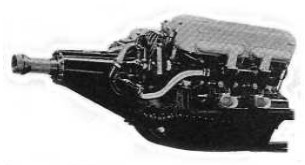
“Fraschini Cantilever”
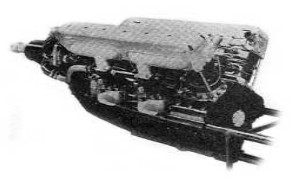
“Cantilever rear part”
-The ASSO L.121.RE40 was a liquid-cooled engine with twelve upright inline cylinders. The ASSO L.180.RCI-45 was liquid cooled as well, and had 18 cylinders in inverted-W.
-From this moment Isotta-Fraschini began to work with radial engines acquiring the license for the Gnome-Rhone 14Krsd model. Later they also made engines that were designed by Piaggio, supposedly in the war effort. Cattaneo, together with Zerbi and Fressia from Fiat, have been the great engine designers in Italy.
-The Beta engines, like the RC10-12 were air cooled, with 6 inverted cylinders, and gave 290 CV at 1,000 meters altitude (Remember that RC-10, refers to 10 = 1,000 meters, RC-15 = 1,500 meters).

“Beta 10”
-It had valves at the cylinder heads. In fact the Beta is a derivative from the Delta that we will see below. Therefore it was sometimes called "Semi Delta", as it used one of its cylinder banks only.
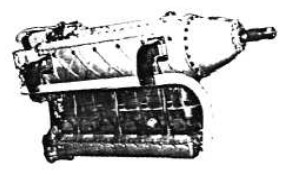
“Beta RC-10”
-Its 250/300 CV made it optimal for many applications.
-The Delta had an unmistakable design and was similar to the Gamma.
-It had epicyclical reduction gear. The small supercharger and mechanical drive was on the left rear of the engine.
-The ASSO 6 Iz model was a return to the RC10 without supercharging giving 220 CV. This engine was from the year 1948.
-The 6RC20 Iz had a compressor and gave a power of 250 CV at 2,000 meters altitude.
-The Gamma RC15 (and RC15 I) were inverted 12-cylinder V-engines that gave 540 CV, less than the Delta. They were air cooled as well.

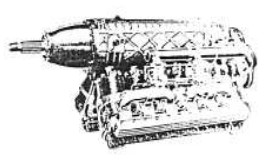
“Delta, photo and drawing”
-The Delta RC20-55 was an inverted V-engine with twelve air-cooled cylinders and supercharger that gave 1,100 CV.
-While the Delta RC35 I was less powerful, 700 CV at 3,500 meters altitude, with two overhead valves per cylinder.
-Its compression was 6'4 to 1. It had a single-speed centrifugal supercharger, 4 "blown" carburetors, and epicyclical gear.
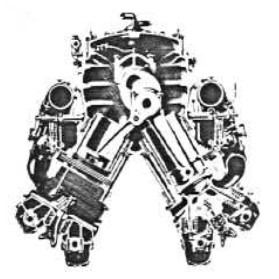
“Delta cross-section”
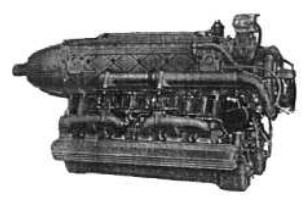
“Another Delta view”
-In the illustration above we see the supercharger behind the engine. The Delta engines were born around 1936-37 as ASSO 120-IRC40 "Delta", first with a superimposed gearbox that raised the propeller shaft. Soon thereafter the most compact and elegant RC-35 I came out.
-The Delta RC-16/48 version was used with 840 CV on the Reggiane RE-2001, also called "Delta". The Delta RC-21/60 engine gave 750 CV, same as the RC-40.
-The Isotta Fraschini ASSO L.121 RC-40 engine gave 900 CV and was a V-12. It was used by Camproni-Campini to drive the compressor of their CC2 engine.
-ASSO L.180RC I-45 was mentioned as a liquid-cooled, inverted W-engine. Going back a little bit in the IF history, they also built upright W engines with the Lorraine and Napier formula.
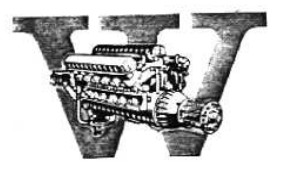
“W formula”
-The ASSO 750 was also designed by Cattaneo. It had 18 cylinders, superimposed gearbox and a single-stage, single-speed, centrifugal compressor. This 1927 engine was mounted on Caproni, SIAI and Aernacchi (MC-77) aircraft.

“ASSO 750”
-And now, taken from an IF catalog, the Asso 750 R, an 18-cylinder W-engine with gearbox that gave 880/910 CV.
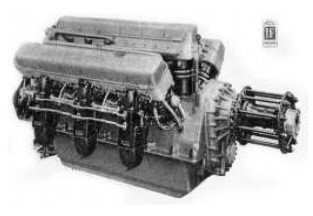
“Asso 750R”
-It is known as the engine used by Italo Balbo on his squadron that crossed the North Atlantic, but without gearbox.
-The ASSO 1000, a W-engine from 1929, was mounted on the Ca-90.
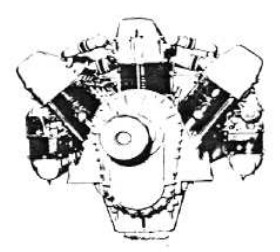
“ASSO 1000, front view”
-At the front we see a gearbox that is similar to the one used by the ASSO 750.

“ASSO 1000 cross-section”
-An ASSO 1000 with 18 cylinders in W giving 1,800 CV is mounted on the M-67 record aircraft.
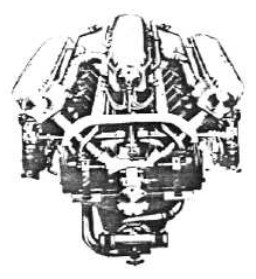
“ASSO 1000, rear view”
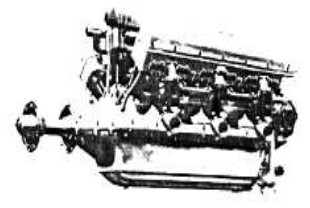
“ASSO 1000”
-We add another nice engine, the ASSO 1000 model. It was used with a wooden propeller, as we see.
-An engineering exercise was the "Zeta" engine. It was an engine of 1941 with cylinders in X.
-Theoretically it consisted of two "Delta" engines, one on top and the other at the bottom.
-It had a total of 24 cylinders delivering 1,250 CV of power.
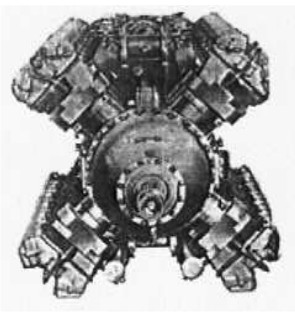
“Isotta Fraschini, Zeta model”
-In the illustration you can see the exact 90° angle between each cylinder bank.
-Continuing the addition of more localized IF engines, we now provide a front photo of the powerful 18W that gave 1,800 CV.
-It was presented at the 1930 New York Air Show.

“IF, 1800 CV”
-Below we insert a view of the AS XI RC-40D.

“AS XI RC-40D”
-With regard to radial engines, Isotta Fraschini called them "Astro". The 7C40 gave 450 CV and had 7 cylinders. The 14C40 had 14 cylinders and delivered 890 CV.
Below we show a photograph of one of the radials, the 7C, of which there were variants, according to the altitude where it obtained its power, 7C20, 7C21, 7C40, etc.
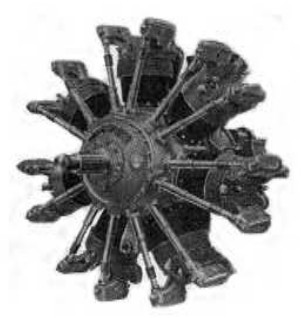
“Astro 7C20”
-The 7C20 had a compressor, and gave 460 CV at 2,000 rpm at sea level, and 500 CV at 2,000 meters altitude.
-The 7C40 gave 400 CV at sea level and 450 at 4,000 meters altitude.
-The compressor of the C20 rotates 7'7 times faster than the crankshaft and on the C40 it spins 11.5 times faster.
IF produced under license the Gnome-Rhone type 14Krsd, which was called K14RCD by Isotta Fraschini (also manufactured by Fiat as A58C and RC).

“IF, K14RCD”
-It had a compressor and gearbox of respectable size, double ignition and carburetor.
-The Gnome Rhone K14 manufactured by IF weighed about 30 Kg more due to the strengthening of some parts for greater reliability.
-Now, another view of the Astro A-140 RC-40, from the rear.
-Finally there were some IF engines with enigmatic names like "Cypselus" which is known to be an air-cooled, 8-cylinder inverted-V-engine with reduction gear and supercharger giving 500 CV at 2,750 rpm.
-Another one was the "Gypagus", an 18-cylinder in inverted W, liquid cooled, with gearbox and supercharger. It gave 1,850 CV at 2,900 rpm. We do not have illustrations of both engines. ASSO L.180 ?.
-From the complete edition of the year 2008/9 we insert an extension with more material from Isotta Fraschini, achieved during a visit to Italian museums.

“Astro A-140 RC-40”
-It appears as the first Isotta-Fraschini engine applied to aviation. It is a V8, M-1 model from 1908 that gave 60 CV at 1,800 rpm. It had 6 liters of displacement. It was installed on a Farman.
-It was designed by Giustino Cattaneo, who, as we see in the main text, was the architect of many other IF engines.
-In 1911 begins the saga of the V-series engines with inline cylinders. The V-1 was a liquid-cooled four-cylinder inline giving 90 CV at 1,200 rpm. It was mounted on a Forlanini airship.
-The V-2, with six cylinders was from 1912 and gave 100 CV. The V-3, also with six cylinders, gave 110 CV and was from 1913.
-In 1915 the V-4 and V-4A appear. But it is in 1916 when the V-4B turns out to be an engine of important results, simple of maintenance, lighter and robuster. It continued in service until at least 1928, and gave 180 CV at 1,400 rpm with its six cylinders in line. This engine was also built by Bianchi and Tosi.
-The V-5 is from 1916, giving 230 CV at 1,300 rpm. Exceptionally, it had eight cylinders.
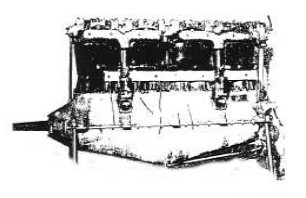
“V-6, eight-cylinder inline”
-It has a philosophy similar to the Daimler-Mercedes D-IV with its eight cylinders.
-We show a photograph of the one located at the Polito in Turin.
-Another V-5 engine, but manufactured by SAN (see) is at the museum in Terrassa, Barcelona.
-With a doubtful restoration but there is still time.

“V-5 at the Polito”
-In 1917, the V-6 came out. It had six cylinders in line, and gave 250 CV at 1,700 rpm.
-It was manufactured under license by Bianchi, Romeo, Breda, Frejus, Miani & Silvestri and Diatto.
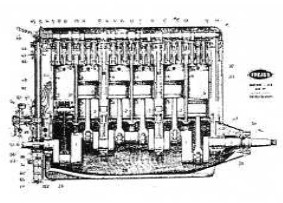
"V-6 manufactured by Frejus"
-The V-6 was used in several Schneider Trophy planes like the one made in Venice in 1919 flying in the Macchi M-7, or the one in 1921 in England in a Savoia S-13.
-In 1917 appeared the V-350, a V-12 that gave 440 CV at 1,500 rpm, and weighed 500 Kgs.
-The V-7 were engines with 12 cylinders in V. It was too late to produce them, since they appeared at the end of WWI, in 1918.
-But it has the quality of having been the brand's first engine to reach a weight/power ratio of less than 1, that is, 500 CV with 450 Kgs.
The V-8 is from 1919 and is another inline six-cylinder engine, that gave 300 CV at 1,800 rpm.
-Its singularity was the desmodromic valve control.
-The V-9 is from the same year with identical characteristics.
-The V-10 that gave 340 CV at 1,800 rpm is from 1923.
-Some engines known as 12DB that were built after the war were no others than the Lorraine 12DB under license. They had 12 cylinders in V and delivered 400 CV.
-In 1924 begins the study of a new engine family, the "ASSO". The "ASSO 500" model was tested in 1925.

“Asso 500”
-It had the architecture very similar to the Fiat engines of the same time with the difference of having the four carburetors on the outside.
-It had four valves per cylinder and several Elektron pieces.
-They resulted to be very resistant and were mounted on several aircraft of different brands, remaining in service for a long time.
-It has in its credit nothing less than 16 world records.
-From 1925 to at least 1930 the following Asso 500 were made: the AQ, the R, the RA and the I-500 with 1,050 CV at 3,000 rpm with gearbox.
-While, in 1927 the Asso 200 comes out (see main text) with 6 cylinders in line giving 260 CV at 1,850 rpm.
-Between 1917 and 1934, the Asso 750 was built, a liquid-cooled W-18 engine. Almost all of them delivered between 850 and 900 CV. Including those of Alta Cota.
-The Asso 1000 was the older brother of the Asso 750, a W-18 as well, reaching 1,000 CV.
-A derivative was the M-2800 for racing. An M-184 AD-C would reach 1,500 CV, but in the year 1942.
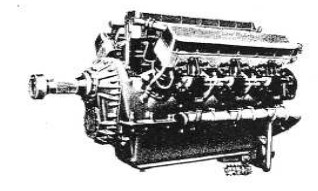
“ASSO 750”
-In 1930 we come to the ASSO Caccia, an air-cooled V-12 that gave 480 CV at 2,400 rpm.
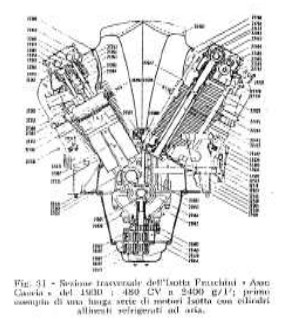
"Outline taken from the Illustrated Parts Catalog"
-Also in 1930 the Asso 80R appears with 6 air-cooled upright cylinders and shortly after that appeared the same engine inverted, the Asso 80RI. Both engines gave 100 CV.
The Asso XI (RC15) is from 1934. This was a V-12 that gave 880 CV at 2,250 rpm and at 1,500 meters altitude.
-This engine was mounted on various airplanes, perhaps the most charismatic was the Cant Z.501 "Mamma Aiuto" airplane.
-Derivatives of the above one were the R2Cs. They were in the same power range and were presented in the 1930's.
-The Asso L.121 R2C15 with 860 CV and the L.180 RCI45, a liquid-cooled inverted W18 that gave 1,300 CV, were also derivatives.

“ASSO AS L.121 R2C15”

“ASSO AS L.180 I RC45”
-In 1934, Isotta Fraschini built the Gnome Rhone K-14 radials under license.
In a picture of the Asso K-14 we see the compressed air distributor for starting.

"Air distributor of a K-14"
-And also at that time IF made the "Astro" series. They were stationary radial engines with 7 and 14 cylinders, the 7C and 14C with their variants, and in the power range between 420/460 CV and 890/1000 CV.
-The Deltas were air-cooled, inverted V-12 engines with powers between 700 and 840 CV at different heights, depending on the model. They were built from 1938 to approximately 1948.
-The Gamma is from 1939, and is similar to the previous one, but smaller with 520 CV.
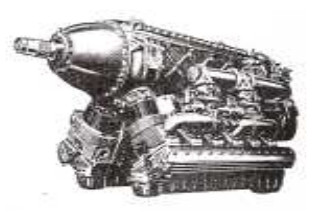
“Gamma RC35I”
-The description of the Delta, Gamma and Beta appear in the main text, as well as the Zeta, which had another derivative engine called Sigma.
-If the Zetas with 24 air-cooled cylinders in X did not exceed 1,500 CV, the Sigmas with the same architecture and 24 liquid-cooled cylinders in X would reach 1,750 CV (2,000 CV at takeoff).
-In 1948 the Isotta-Fraschini made the ASSO 6I.z and 6RC20I.z, both with 220 CV for postwar aviation.
-With regard to the Cypselus and the Gypagus, we still have no graphic information. Both engines are from 1948.
-For some reason, IF acquired the rights to an engine invented by Fuscaldo but the manufacturing license was transferred to "S.A. Motori Marini Carraro ". (See).
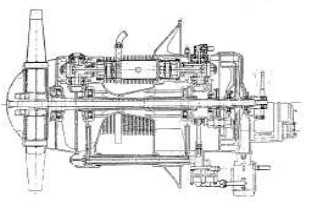
“Carraro-IF-Fuscaldo”
-The unit shown is a two-stroke, three-cylinder, revolver type engine.
-We received an illustration for the ASSO 200 with six cylinders inline, and a power of 250 CV at 1,800 rpm.

“Asso 200”
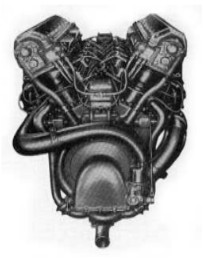
“Asso XI -RC.40”
-The Asso XI was a derivative from the Asso 500, with 12 cylinders in V at 60° but larger. It gave 680 CV at 2,250 rpm.
-Variations were made such as R2C-15, RC-45, R2C-40, etc.
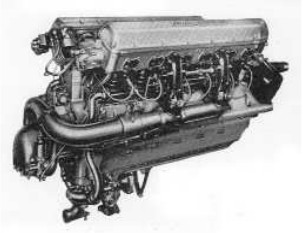
“Asso XI R2C-40 rear view”
From Appendix 6: And again we received a picture of the Isotta-Fraschini Asso 80 engine, but with a construction that is different from the one known up to now: The gearbox is very ribbed externally to give more consistency to the assembly.
-The oil pan has fins as well that seem, more than giving consistency, they are cooling the oil contained in the crankcase better.
-All this gives the whole a really beautiful aspect, with an extraordinary line and finesse.
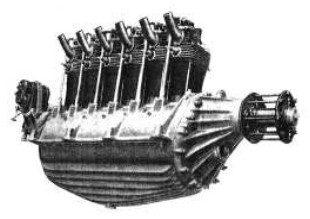
“ASSO 80”
-In a recent visit to Vigna di Valle, the V-4b has been photographed. As a curiosity the panel indicated only "4b" eliminating the V of generic "Volo".
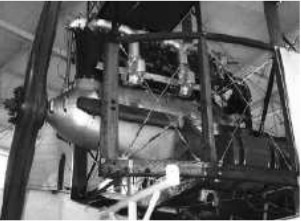
"IF, V-4b model on an Italian hydro"
-Another interesting Isotta-Fraschini is the 12Db, with 400 CV.
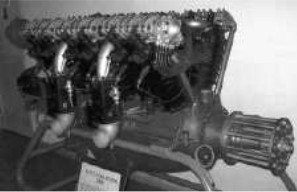
“IF, 12 Db model”
-We also discovered an air-cooled "Asso Caccia" that gave 480 CV. In the photo we see that under the support there are the deflectors that were used for this engine.
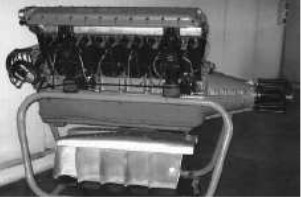
“Asso Caccia”

“IF, Asso 750”
-The Asso 750, without gear gives 850 CV. It has 18 cylinders in W clearly visible in this semi-frontal photo.
-The geared version would be the Asso 750 RC35, which indicates that at 3,500 meters of altitude it gave 955 CV.
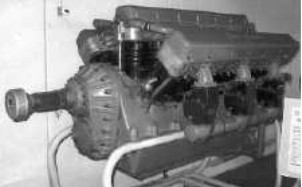
“Asso 750 RC35”
We obtained photographs of the IF Zeta model that is mentioned in the main text without illustration.
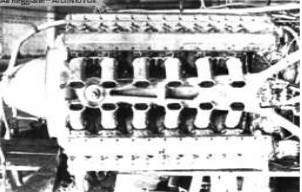
“Motor IF Zeta”
-The Isotta-Fraschini Z engine was a 24-cylinder engine in X, which we see here in a side view.
-It was an air-cooled engine with a power of 1,250 CV. In the illustration below it appears with mounted deflectors and its exhausts definitely oriented as it appeared on the Reggiane Re-2004.

"Zeta in air bench -Savoia S-79- with deflectors"
-This engine was specifically a Zeta RC24/50.
-Finally we have it complete with cowling for the mentioned fighter plane.
-All these photos are from the Fox Archive of Ali-Reggiane. Permissions in process.
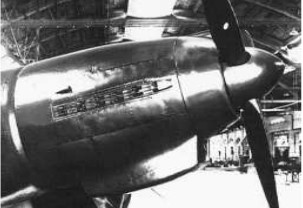
"Photograph of the IF Zeta engine with cowling"
From Appendix 9: Vigna di Valle exhibits an engine of this brand with the denomination 12DB.
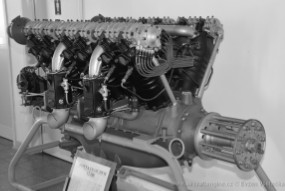
“Isotta Fraschini, 12DB”
-It turns out to be an engine built in approximately 1924 and under Lorraine-Dietrich license of the V12 engine with the same reference: 12DB.
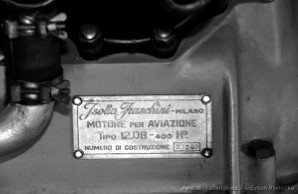
"Engine plate where the License is not mentioned"
-A characteristic of this engine, being of French origin, it is started by compressed air. The French used this very often.
-A compressor charges a boiler while the engine is running normally. A reserve is available which, at the time of a new start-up, is discharged into each cylinder at the moment of the power stroke.
-For each cylinder to be injected with starting air, a synchronized distributor is needed, like a spark from a magneto.
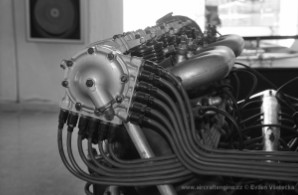
"Distributor with 12 air outlets"
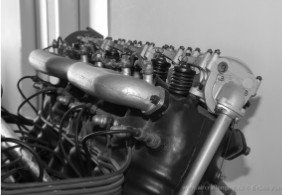
“Details of ducts to cylinders”
- Next to each spark plug there is a valve that opens automatically when the air pressurizes, giving way to the cylinder at the start of the expansion stroke.

“Isotta-Fraschini 12DB”
-We have a new photo of the L.121 / RC40, Asso.

“Asso L121 / RC 40”
-RC 40, means that it restores the nominal power at 4,000 feet.
From Appendix 10: We achieved some neater photos of the X RC50/60 "Zeta" engine installed on aircraft.
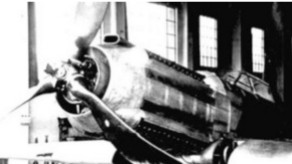
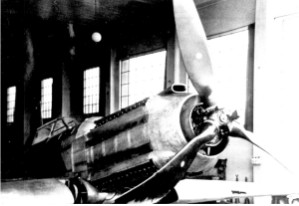
“Two photos of the IF X” (photos Gruppo Apostoli, PiP)
-When the text is finished we will proceed to request Gruppo Apostolo permission to use their photos.
From Appendix 12: Initials of Isotta-Fraschini. We have two new photos of the V-6 engine with 6 inline cylinders. It was licensed to other Italian companies. (See Issotta-Fraschini).
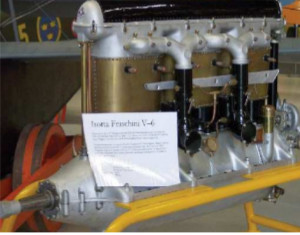
“IF V-6 engine with 6 inline cylinders”
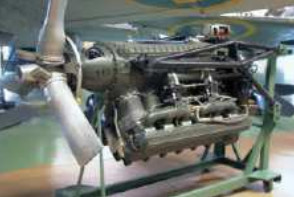
"The Delta model IF"
Engines of ISOTTA FRASCHINI
Model: 12-Db
Arquitecture:
Cooling:
Total Displacement:
Bore / Stroke: x
Power:
Weight:

"Isotta Fraschini, 12DB fig. 2"
Model: Asso 18W (1800 CV)
Arquitecture:
Cooling:
Total Displacement:
Bore / Stroke: x
Power:
Weight:
Model: Asso 6.Iz
Arquitecture: 6-cylinder In line inverted
Cooling: Air
Total Displacement:
Bore / Stroke:
Power: 220 CV
Weight:
Model: Asso 6/RC20 Iz
Arquitecture: 6-cylinder In line inverted
Cooling:
Total Displacement:
Bore / Stroke:
Power: 250 CV
Weight:
Model: Asso 8, water, 4 cyl.
Arquitecture: In-line
Cooling:
Total Displacement:
Bore / Stroke:
Power: 90 CV
Weight:
Model: Asso 80, -80T, 6 cyl.
Arquitecture: 6-cylinder In-line
Cooling: Air
Total Displacement: 6600 cc
Bore / Stroke:
Power: 100 CV @ 2200 rpm
Weight:

"Isotta Fraschini ASSO 80 RT"
Model: Asso 80-RR, inverted inline
Arquitecture: 6-cylinder In line inverted
Cooling: Air
Total Displacement: 6600 cc
Bore / Stroke:
Power: 100 CV
Weight:

"Isotta Fraschini ASSO 80 RR"
Model: Asso AS L.121 R2C15
Arquitecture:
Cooling:
Total Displacement:
Bore / Stroke:
Power:
Weight:

"Isotta Fraschini ASSO AS L.121 R2C15"
Model: Asso L-121/RC-40
Arquitecture: 12-cylinder In-line
Cooling: Liquid
Total Displacement:
Bore / Stroke:
Power: 900 CV
Weight:

"Isotta Fraschini Asso L121 / RC 40"
Model: Asso L-180/RC I-45
Arquitecture: 18-cylinder W-engine
Cooling:
Total Displacement:
Bore / Stroke:
Power:
Weight:

"Isotta Fraschini ASSO AS L.180 I RC45"
Model: Asso XI/RC
Arquitecture: 12-cylinder V-Engine
Cooling:
Total Displacement:
Bore / Stroke:
Power: 860 CV @ 2250 rpm
Weight:

"Asso XI -RC.4, fig. 2"
Model: Asso-1000
Arquitecture: 18-cylinder W-engine
Cooling:
Total Displacement:
Bore / Stroke:
Power: 1800 CV
Weight:

"Isotta Fraschini ASSO 1000"
Model: Asso-120
Arquitecture:
Cooling:
Total Displacement:
Bore / Stroke: x
Power:
Weight:
Model: Asso-200
Arquitecture: 6-cylinder In-line
Cooling: Liquid
Total Displacement:
Bore / Stroke:
Power: 210 CV
Weight:

"Isotta Fraschini ASSO 200"
Model: Asso-220
Arquitecture: 6-cylinder In-line
Cooling: Liquid
Total Displacement:
Bore / Stroke:
Power:
Weight:

"Isotta Fraschini ASSO 220"
Model: Asso-500, -Ra, -Aq
Arquitecture: 12-cylinder V-Engine
Cooling: Liquid
Total Displacement:
Bore / Stroke:
Power: 420 CV
Weight:

"Isotta Fraschini ASSO 500 geared"
Model: Asso-750
Arquitecture: 18-cylinder W-engine
Cooling:
Total Displacement:
Bore / Stroke:
Power: 910 CV
Weight:

"Isotta Fraschini ASSO 750-R"
Model: Asso-Caccia 450
Arquitecture:
Cooling:
Total Displacement:
Bore / Stroke: x
Power:
Weight:

"ASSO-Caccia 450"
Model: Asso-Cantilever
Arquitecture: V-Engine
Cooling:
Total Displacement:
Bore / Stroke:
Power: 1100 CV
Weight:

"Isotta Fraschini ASSO Cantilever"
Model: Astro 14, radial
Arquitecture: 14-cylinder Radial
Cooling:
Total Displacement:
Bore / Stroke:
Power: 890 CV
Weight:
Model: Astro 7C, radial
Arquitecture: 7-cylinder Radial
Cooling:
Total Displacement:
Bore / Stroke:
Power: 460 @ 2000 rpm
Weight:

"Isotta Fraschini Astro 7C20"
Model: Astro A-140/RC40 (A-14-O?)
Arquitecture:
Cooling:
Total Displacement:
Bore / Stroke: x
Power:
Weight:

"Isotta Fraschini Astro A-140 RC-40"
Model: Beta 10/RC10
Arquitecture: 6-cylinder In line inverted
Cooling: Air
Total Displacement:
Bore / Stroke:
Power: 290 CV
Weight:

"Isotta Fraschini Beta 10 RC-10"
Model: Cypselus
Arquitecture: 8-cylinder Inverted V-engine
Cooling: Air
Total Displacement:
Bore / Stroke:
Power: 500 CV @ 2750 rpm
Weight:
Model: Delta
Arquitecture: 12-cylinder Inverted V-engine
Cooling: Air
Total Displacement:
Bore / Stroke:
Power: 1100 CV
Weight:
Delta RC20-55: 1100 CV.
Delta RC35 I: 700 CV.
Delta RC-16/48: 840 CV
Delta RC-21/60: 750 CV

"Isotta Fraschini Delta"
Model: Fuscaldo (constr. Lic.)
Arquitecture:
Cooling:
Total Displacement:
Bore / Stroke: x
Power:
Weight:

"Carraro-IF-Fuscaldo"
Model: G-R, K-14RCD (G-R Lic.)
Arquitecture: 14-cylinder Radial
Cooling:
Total Displacement:
Bore / Stroke:
Power:
Weight:

"Isotto Fraschini K14RCD"
Model: Gamma
Arquitecture: 12-cylinder Inverted V-engine
Cooling: Air
Total Displacement:
Bore / Stroke:
Power: 540 CV
Weight:

"Isotta Fraschini Gamma RC35I"
Model: Gypagus
Arquitecture: 18-cylinder W-engine
Cooling: Liquid
Total Displacement:
Bore / Stroke:
Power: 1850 @ 2900 rpm
Weight:
Inverted W
Model: Lorraine-Dietrich 12Db (Lic.)
Arquitecture:
Cooling:
Total Displacement:
Bore / Stroke: x
Power:
Weight:
Model: M-1, en V
Arquitecture:
Cooling:
Total Displacement:
Bore / Stroke: x
Power:
Weight:
Model: M-184, 1500 CV
Arquitecture:
Cooling:
Total Displacement:
Bore / Stroke: x
Power:
Weight:
Model: M-2800, 18W (Asso 18W?)
Arquitecture:
Cooling:
Total Displacement:
Bore / Stroke: x
Power:
Weight:
Model: V-7, en V
Arquitecture: 12-cylinder V-Engine
Cooling:
Total Displacement:
Bore / Stroke: 149 x 180 mm
Power: 510 CV @ 1700 rpm
Weight:

"Isotta Fraschini V-7 (Volo-7)"
Model: V-8
Arquitecture: 8-cylinder In-line
Cooling:
Total Displacement:
Bore / Stroke:
Power: 250 CV @ 1320 rpm
Weight:

"Isotta Fraschini V-8"
Model: V.1, 90 CV
Arquitecture: 4-cylinder In-line
Cooling:
Total Displacement:
Bore / Stroke:
Power: 90 @ 1200 rpm
Weight:
Model: V.2, 100 HP
Arquitecture: In-line
Cooling:
Total Displacement:
Bore / Stroke:
Power: 100
Weight:
Model: V.3
Arquitecture:
Cooling:
Total Displacement:
Bore / Stroke:
Power: 110 CV
Weight:
Model: V.4, V.4b, 180 CV
Arquitecture: 6-cylinder In-line
Cooling: Liquid
Total Displacement: 14300 cc
Bore / Stroke: 130 x 180 mm
Power: 180 CV @ 1350 rpm
Weight: 264 Kg
Specifications for the V.4b

"Isotta Fraschini V-4b"
Model: V.5
Arquitecture: 8-cylinder In-line
Cooling: Liquid
Total Displacement: 19000 cc
Bore / Stroke: 130 x 180 mm
Power: 200 CV @ 1400 rpm
Weight: 351 Kg

"Isotta Fraschini V-5"
Model: V.6, V.6b
Arquitecture: 6-cylinder In-line
Cooling: Liquid
Total Displacement:
Bore / Stroke:
Power: 250 CV
Weight:

"Isotta Fraschini V-6 rear-angle view"
Model: V.9
Arquitecture: 6-cylinder In-line
Cooling: Liquid
Total Displacement:
Bore / Stroke:
Power: 310 CV
Weight:

"Isotta Fraschini V-9"
Model: X-model
Arquitecture:
Cooling:
Total Displacement:
Bore / Stroke: x
Power:
Weight:

"Isotta Fraschini X model"
Model: Zeta
Arquitecture: 24-cylinder X-engine
Cooling:
Total Displacement:
Bore / Stroke:
Power: 1250 CV
Weight:

"Isotta Fraschini, Zeta model"


